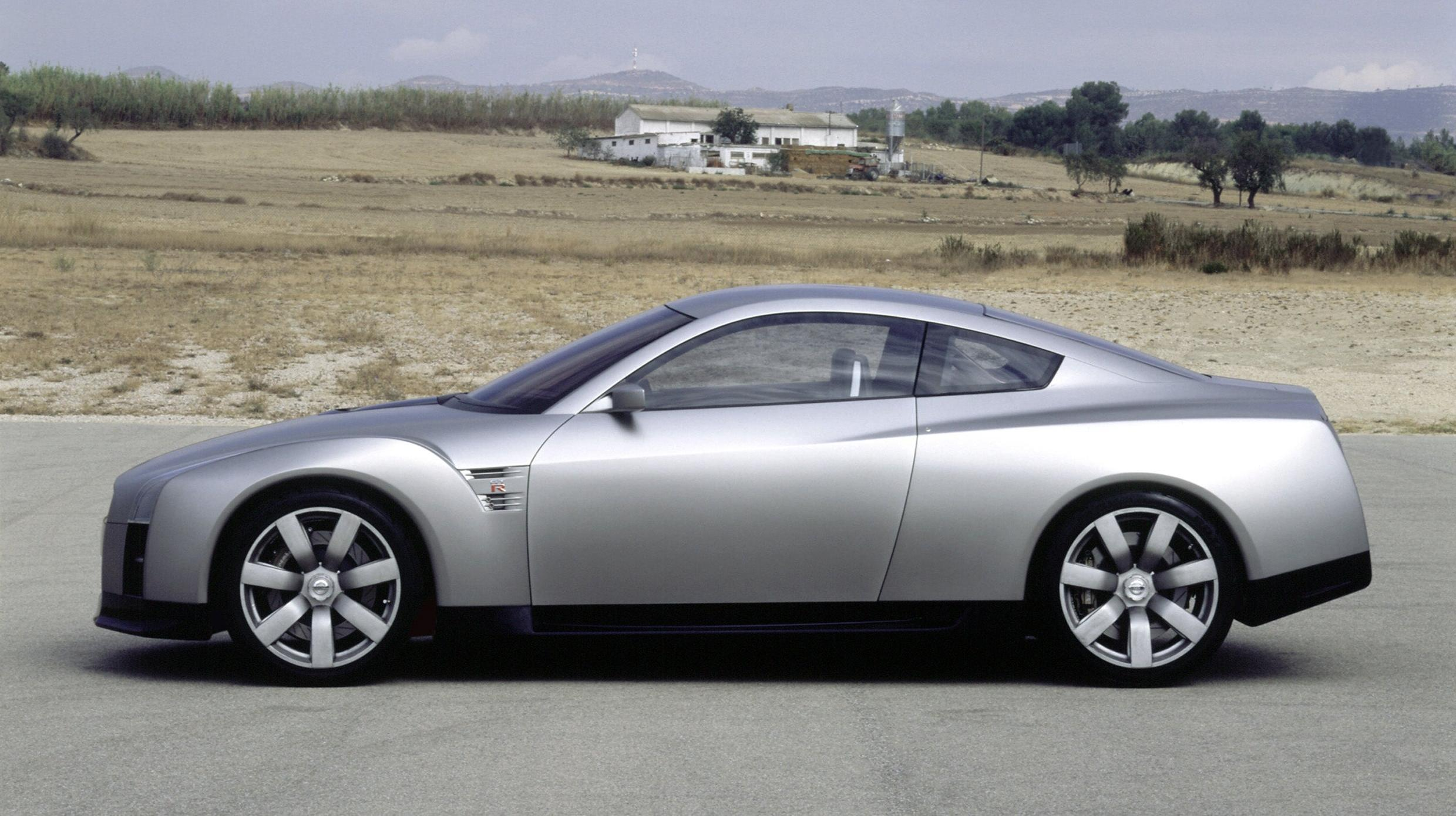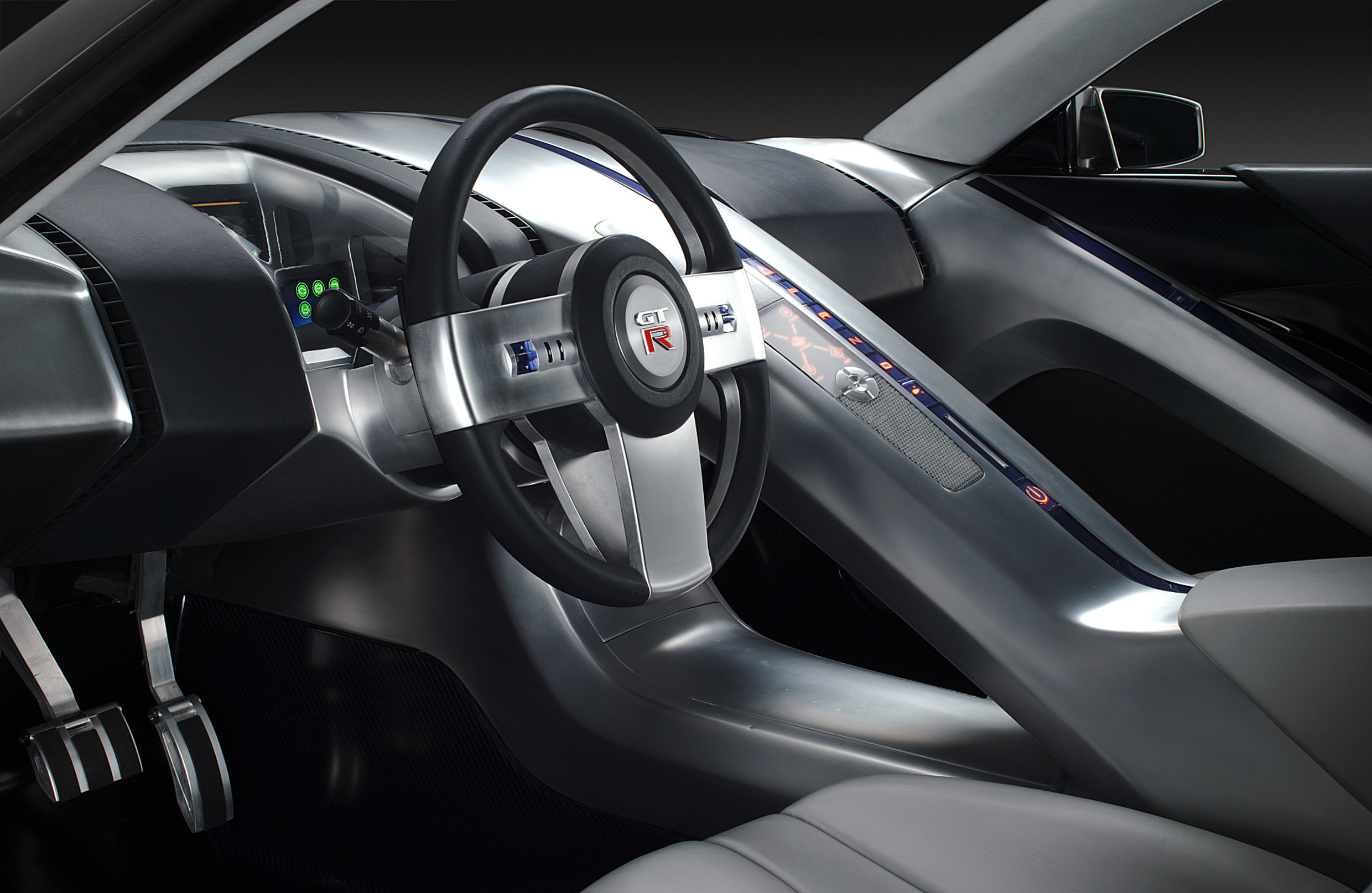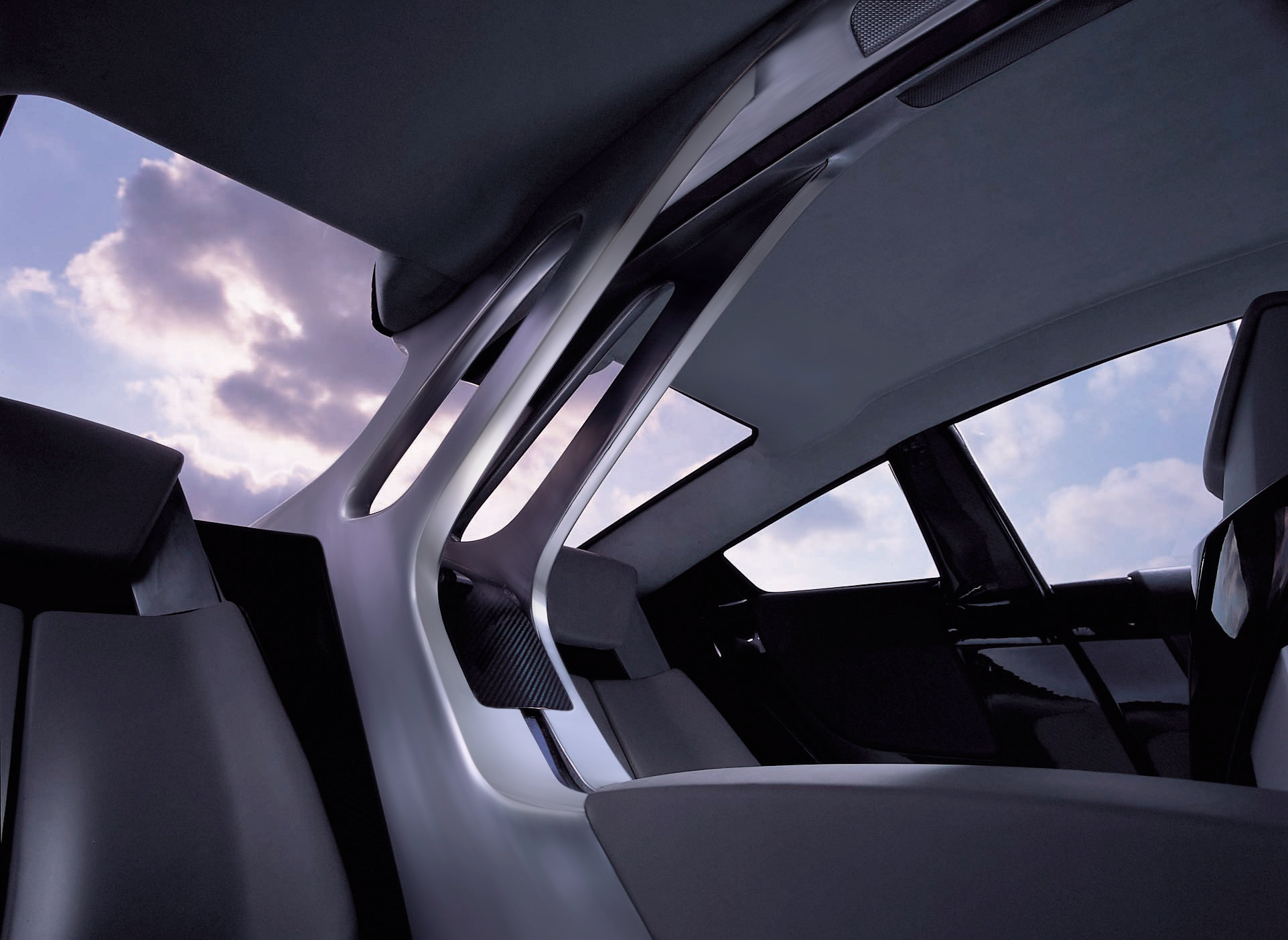The 2001 Nissan GT-R Concept Was The First Stop On The Long Road To The R35
Behold a 20-year-old preview of a car that somehow is still on sale today. Feel old yet?
Welcome to another installment of Cars Of Future Past, a series at Jalopnik where we flip through the pages of history to explore long-forgotten concepts and how they had a hand in shaping the cars we know today.
As the Jaguar's forgotten F-Type demonstrated last week, the road from concept to production can be lengthy and anything but direct. In the case of that Jag, bureaucracy killed the dream multiple times. But sometimes, the delay is merely the result of constant evolution and shifting scope — as was the case when the angular, slab-sided coupe seen above transformed into the R35 Nissan GT-R we all know and love six years later.
What Is It?
The Nissan GT-R needs no introduction, though this particular concept — and the corporate climate under which it was born — probably could use one.
The waning months of the '90s were wild days for Nissan, a company desperate to stop hemorrhaging money. It was around this time that then-CEO and current international fugitive Carlos Ghosn spearheaded a three-year-plan to cut 21,000 jobs, close factories and end cross-holding schemes with suppliers and competitors that weren't doing the company any financial favors. The brand emerged healthier for it, though its range didn't necessarily look it.
Typically, aggressive cost-saving strategies don't go hand-in-hand with launching ambitious, benchmark-setting sports cars, but Nissan seemed to be dead set on reinventing the GT-R — previously sold only in Japan — as a global flagship under its own nameplate, separate from the Skyline lineage. The world got its first peek at the result in October 2001 at the Tokyo Motor Show, an event that, in retrospect, was sort of a gold mine for quirky and forward-thinking concepts.

Nissan teased the R35's international aspirations from the very beginning. "As a world-class sports coupe sold only in its home market of Japan, car enthusiasts in other countries have had to rely on the words of the motoring press lucky enough to have experienced a test drive as proof of the GT-R's prowess," the press release accompanying the car's unveiling read. "Others have had to settle for electronic simulated race laps behind the wheel of the GT-R in various popular video games. Until now."
But the Skylines in Gran Turismo didn't look anything like this one. GT-Rs of the past were sleek but also kind of featureless, playing to the coke-bottle proportions that defined so many legendary Japanese sports cars of the previous decade. This 2001 concept, on the other hand, was like a solid block of aluminum, exquisitely milled in some places and softly eroded in others. The only obvious giveaway to the car's family ties were its four circular taillights.
In hindsight, the concept was a more of a sign of Nissan's design language to come rather than a homage to GT-R history. The V35 Skyline — known here as the Infiniti G35 — and the 350Z all echoed the same tapered greenhouse, though on this vehicle it was attached to an edgier, leaner mass.

Inside, things got considerably more radical. The novelty of a left-hand drive GT-R 20 years ago would have been noteworthy enough, but then there's that gigantic flying buttress connecting the center console with the top of the dashboard, blocking any space for a manual shifter. This was a busy cabin, clad top to bottom in bare, cold metal.
And it wasn't any different for rear-seat passengers. Splitting the back was the GT-R Concept's "structural cage" — a central member dropping down from the roof of the car, almost forming a spine between the two rear seats. All this scaffolding was fundamental to delivering the "superior handling and braking" Nissan promised. Or at least it would have been, if this car could actually move. The automaker never even published prospective drivetrain information about it.

This GT-R was a design study first and foremost, and it didn't need to run to whet the public's appetite. After its appearance in Tokyo, the GT-R Concept made its way to the 2002 Detroit Auto Show before touring the rest of the world. And then it just disappeared for a few years, before returning in a very big way.
Why Is It Good?
Although I've always admired the production R35, the minimalism of this earlier attempt is refreshing in a "what if" sort of way. If you ask the guy who penned it, though, it wasn't angry enough to be a GT-R. "We thought the 2001 concept was strong at the time," Nissan's then-design head Shiro Nakamura told Motor Trend in 2006. "But now I think it was too smooth."
I don't trust myself to make a case that this look was better than the production car's. When you've seen the same thing for 16 years, the normality tends to color your judgment a bit. That said, there's certainly a different vibe coming off this 2001 design — one that's less organic and a little more sophisticated, possibly because it doesn't seem to be trying as hard. This GT-R almost has a sleeper quality to it like many of the previous Skylines did. And yet, at the same time, it looks nothing like them.
That all tracks, though, because this GT-R was born out of an era where simplicity and "flame surfacing" was in, and not every performance car needed to be a rip-snorting caricature of itself. Perhaps this GT-R isn't as mean as one should be — but I definitely wouldn't call it "dopey," either.
Did It Happen?
Well, not like this, of course. Nissan continued developing the GT-R's design, until its next big showing — the GT-R Proto, which appeared at the 2005 Tokyo Motor Show.
The Proto is the one that everyone remembers, mainly because it was the concept that previewed the production R35. Aside from slight changes to the front fascia that deleted the corner intakes and most of the carbon fiber, this was pretty much what we ended up getting. And while the differences between the Proto and the pre-facelift GT-R aren't massive, the differences in comparison to the 2001 concept are profound. You'd only confuse the two side by side if you deliberately unfocused your eyes.
It's easy to forget, but it really did feel like an eternity waiting for the R35. Even after the Proto premiered, Nissan needed two more years before cars began rolling off the production line.
Can You Drive It In A Video Game?
You wouldn't expect Gran Turismo to miss an opportunity to feature a GT-R, and the series certainly didn't. The 2001 GT-R Concept was included in the GT Concept games, GT4, GT5 and GT6 as well as the PSP offshoot. There was even a fictionalized "LM Version" that I reckon is still the coolest fake race car to ever grace the franchise. That diffuser is unreal.
GT5 Prologue is worth a mention too, because it not only featured the GT-R Proto — it also contained a camouflaged "black mask" version of the production GT-R before the car was unveiled. On the day the final GT-R was revealed at the 2007 Tokyo Motor Show, it was added to the game as a downloadable update with a very slick animation.
It's little surprise Gran Turismo developer Polyphony Digital was so invested in the R35's progress, considering the studio designed the car's multifunction display telemetry system. There's something sort of poetic about that; you could argue the GT-R may never have ventured west without Gran Turismo's influence, and here was the game's developer contributing to the vehicle's development.
The 2001 concept did end up in another prominent racer — Project Gotham Racing 3 on the Xbox 360. That appearance is notable because PGR3 had detailed interior views for all its cars, which was a novelty back in 2005. I'll warn you though: It's not as graphically impressive as your rose-tinted glasses would have you remember.



